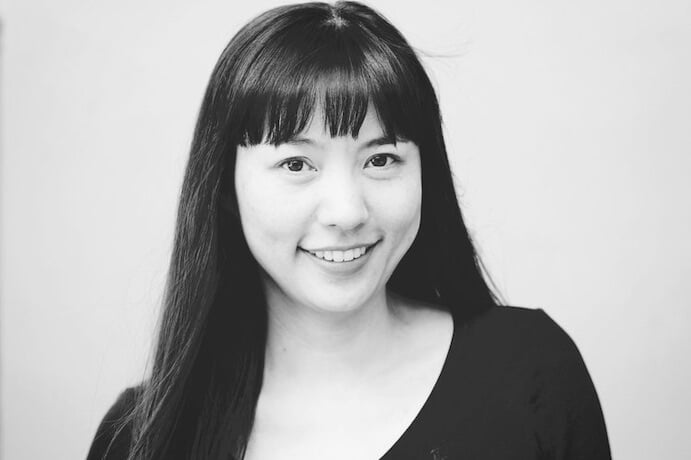No composer works in a vacuum, but some show their influences more plainly than others. On Respiri, Juri Seo’s newest innova release performed by Argus Quartet, the composer flaunts a range of references old and new, human and nonhuman, from Bach to Jonathan Harvey and from the seasons to the harmonic series. Tying these together are the ubiquitous presence of bowed strings as analogues for breath, and of breathing as a proxy for the cyclical patterns common to Seo’s inspirations and the works collected here. Born in Seoul and now based in Princeton, New Jersey, where she teaches at Princeton University, Seo explains: “String instruments speak in a human voice […] And they are also superhuman. They can sing in the realm of birds; their breaths can extend to eons.”
Few composers have been as concerned with these breaths and their patterning as the late Jonathan Harvey (1939–2012), for whom the album’s title track serves as a memorial. Seo’s doctoral dissertation focused on Harvey’s string quartets, and some of their central preoccupations—continuity, transition, and long arc-like structures—are absorbed and identified with here. Beginning with warm, low tones, Respiri quickly dissolves harmonics and birdcall-like figures into chirpy ostinati and melodic throughlines. These transitions guide the piece through a series of more elaborate episodes, with the melodic material coming gradually to the fore and engaging the entire quartet before receding into a sentimental coda.

Juri Seo–Photo by Andrew Wilkinson
Situated between two performances by the full quartet, Seo’s Suite for Cello occupies the album’s second slot. The genre inevitably calls to mind solo works of J.S. Bach, an association Seo doesn’t shy away from here. She writes: “I wanted to capture the warmth and intimacy that made me fall in love with Bach’s suites while at the same time exploring affective extremes—the fragile, the violent, the obsessive—that were perhaps unavailable to him.”
Despite its brevity (about 12 minutes) and reliance on historical forms, the suite often feels like the most significant work on Respiri on account of its stripped-down concentration and eschewal of familiar programmatic conceits. Crystalline arpeggiato figuration and chordal harmonies are often distorted by timbral alterations, slanted Bach quotations and a low scordatura ‘B string’ that darkens the instrument’s tonal palette; these distortions come to characterize the piece’s overall expressive climate rather than diverting its course. The gigue-like central movement is of particular note, opening with a rocking two-note figure that seems to spin itself out of existence almost as quickly as it arrives. The penultimate movement stretches along the harmonic series of the lower strings, taking on a filigree of trills to set the stage for the work’s glimmering close. Cellist Joann Whang’s playing is cool and pristine, allowing the structural clarity of the suite to come through unforced–quasi-baroque passagework comes alive in reams of prismatic color; adagios are rendered without romantic excess.
A longer work in four parts, String Quartet (Infinite Seasons) expands the united conception of nature and cyclical breath demonstrated in Respiri to encompass a depiction of the changing seasons lasting around 30 minutes. The movements follow the Classical quartet model, with a sprawling, sonata-weight first movement (“Winter–Spring”) followed by a slow movement (“Spring–Summer”), scherzo (“Summer–Fall,” complete with Vivaldi Summer quotation), and finale (“Fall–Winter”) rounding out the piece.

Argus Quartet–Photo by Lauren Desberg
Instrumental mimicry and recorded playback of natural sounds (birds and cicadas) figures prominently except in “Summer–Fall,” which features the unaccompanied group in tremolandi and cascading sequences over a bed of microtonal sustain. “Winter–Spring” begins with chords around bright open strings activated by harmonics, evoking icy stillness. Running motives signifying the arrival of spring culminate in a pitch-bent ostinato passed between the violins at the center of the movement, relaxing into near-stasis and the songs of Black-Capped Chickadees. In “Spring–Summer,” high ricochet twittering and rhythmic pulsations settle into a languorous insect chorus that continues in the prerecorded track long after the quartet has finished. The opening of “Fall–Winter,” with fragmentary utterances by the violins and viola underlined by cello pizzicati, comes across as unique for its poise and detachment; a cheerful allegro reminiscent of film music follows before the reintroduction of birdsong at the movement’s end. Seo sees this gesture, sonically and programmatically wrapping around to the quartet’s beginning, as emblematic of the seasons’ endless succession: the cycle closes just as it began, and in so doing begins afresh.
A concise portrait album, Respiri illuminates some of Seo’s core aesthetic preoccupations through a trio of key works. Newcomers to her output might be advised to start here: the compositions are engaging, and the performances and recorded sound, engineered by Andrés Villalta from takes in Princeton’s Taplin Auditorium, are excellent. If the works reveal their reference points with what sometimes seems like overeagerness to please, they compensate by the coherence of their voice and by the connections that voice produces between individual and global, natural phenomena. By building on strong premises and each seeking out a richer formal and dramatic design than the last, the pieces point to promising future directions; Seo’s listeners will find in Respiri an encouraging step forward on an open-ended path.
